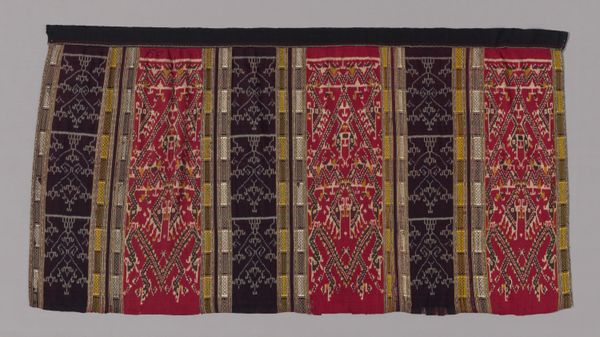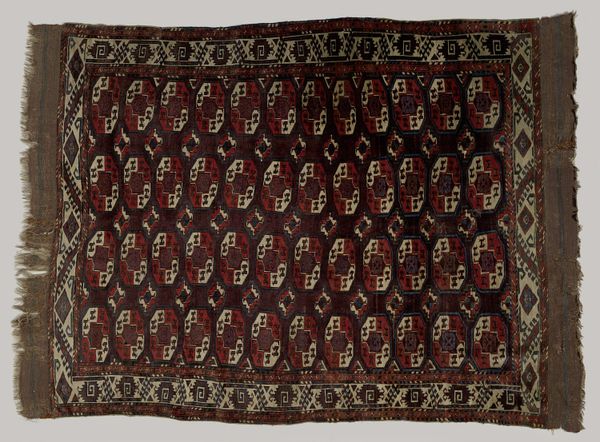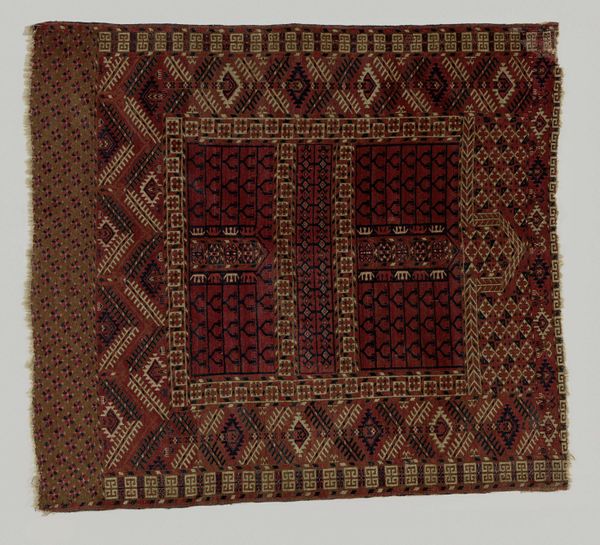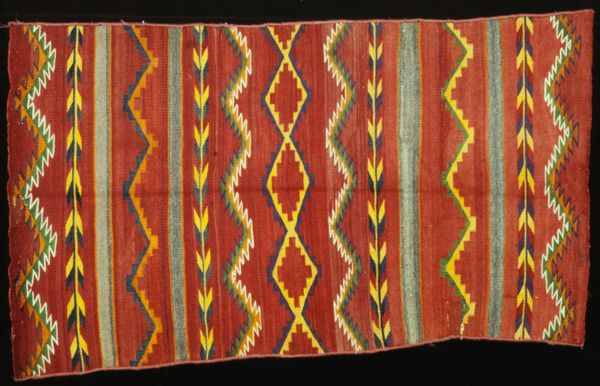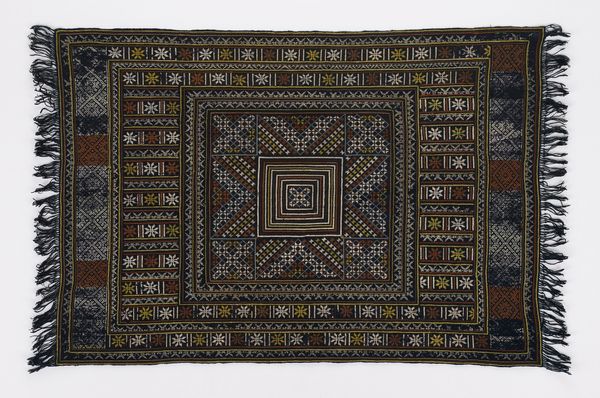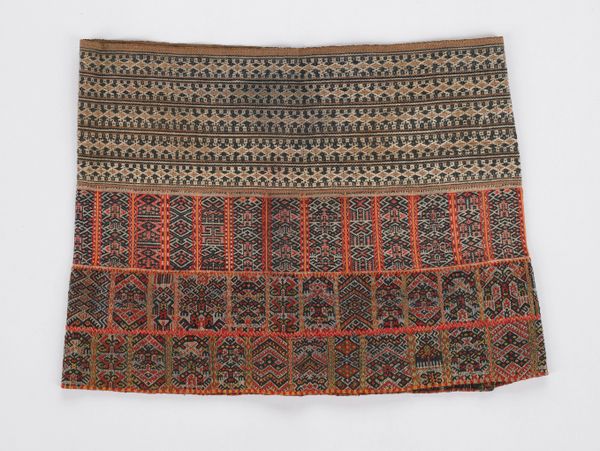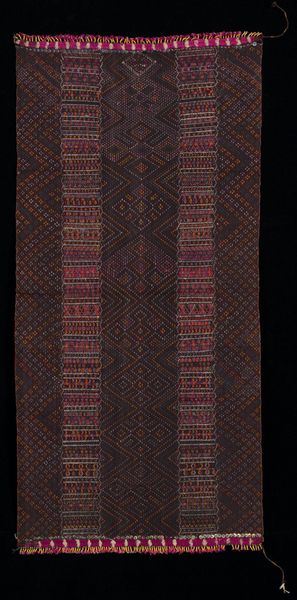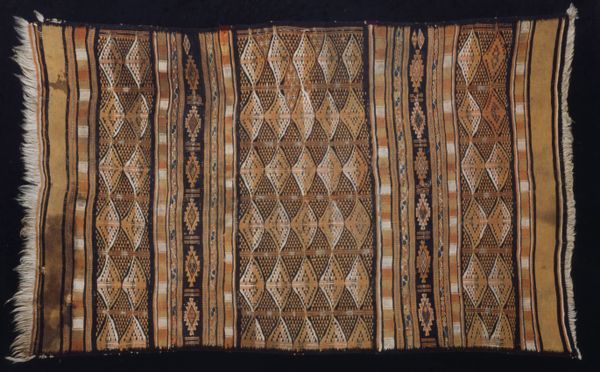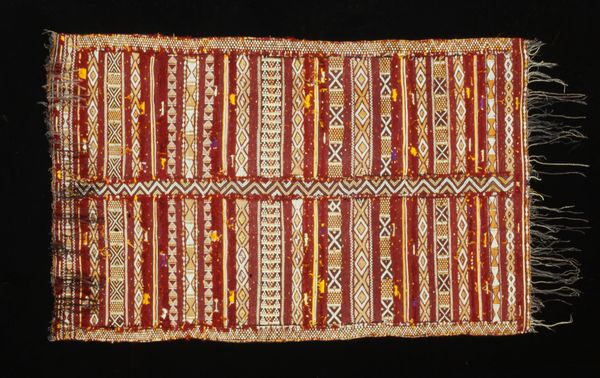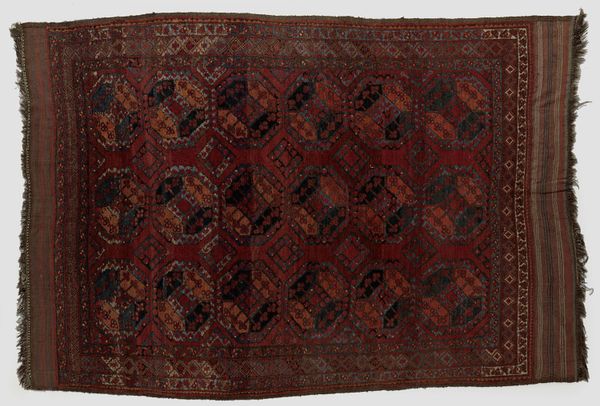
fibre-art, textile
#
fibre-art
#
textile
#
geometric pattern
#
geometric
#
indigenous-americas
Dimensions: 27.4 × 50.3 cm (10 3/4 × 19 3/4 in.) Weft repeat: 15.7 cm (6 1/4 in.)
Copyright: Public Domain
Curator: Right now, we are looking at a textile work titled "Panel" dated from 1875 to 1900. It's an example of fibre art now residing here at the Art Institute of Chicago, representative of the Indigenous Americas art movement. What are your immediate impressions? Editor: There's something deeply satisfying about the geometric precision. The muted colour palette is very striking; browns, greens, with a slight red accent. It lends a feeling of understated elegance, don't you think? The symmetry in its arrangement gives the textile an immediate sense of wholeness. Curator: It's fascinating how Indigenous communities, particularly in the United States, adapted and transformed introduced materials and techniques. Textiles became potent tools for cultural expression, sometimes to represent or sometimes to negotiate relations with settler society. Editor: Yes, there is something that suggests cultural negotiation here. If we examine the panel’s composition more closely, there is a careful placement of the designs, how they converge towards the edges, giving the sense that we are witnessing the result of calculated intent rather than whimsical craft. Curator: Absolutely, the use of geometric designs often holds specific symbolic meanings rooted in community belief systems. Each placement and repeated motif can speak volumes about cosmology, social structures, or historical narratives. Editor: This makes the interpretation all the more layered, doesn’t it? Beyond pure aesthetic value, there are many interpretations. Does that level of historical understanding help appreciate the craftsmanship? Curator: Invaluable insights are unveiled once one looks at cultural objects like "Panel" beyond its formal features. Viewing art objects without context is like only experiencing half the artwork; context opens up conversations about social change, cultural encounters, and also resistance. Editor: So, in its own way, "Panel" isn't just a decorative piece—it’s a form of storytelling and historical witness through materials. Looking at this Indigenous fiber-art opens a door to wider discussion on the interactions that shaped communities of the time. Curator: Precisely! This "Panel," then, reminds us of the essential role of art, and its ability to preserve identity. Editor: It’s quite amazing that formal and historical analysis both enrich and broaden each other, really deepening the viewing experience.
Comments
No comments
Be the first to comment and join the conversation on the ultimate creative platform.
